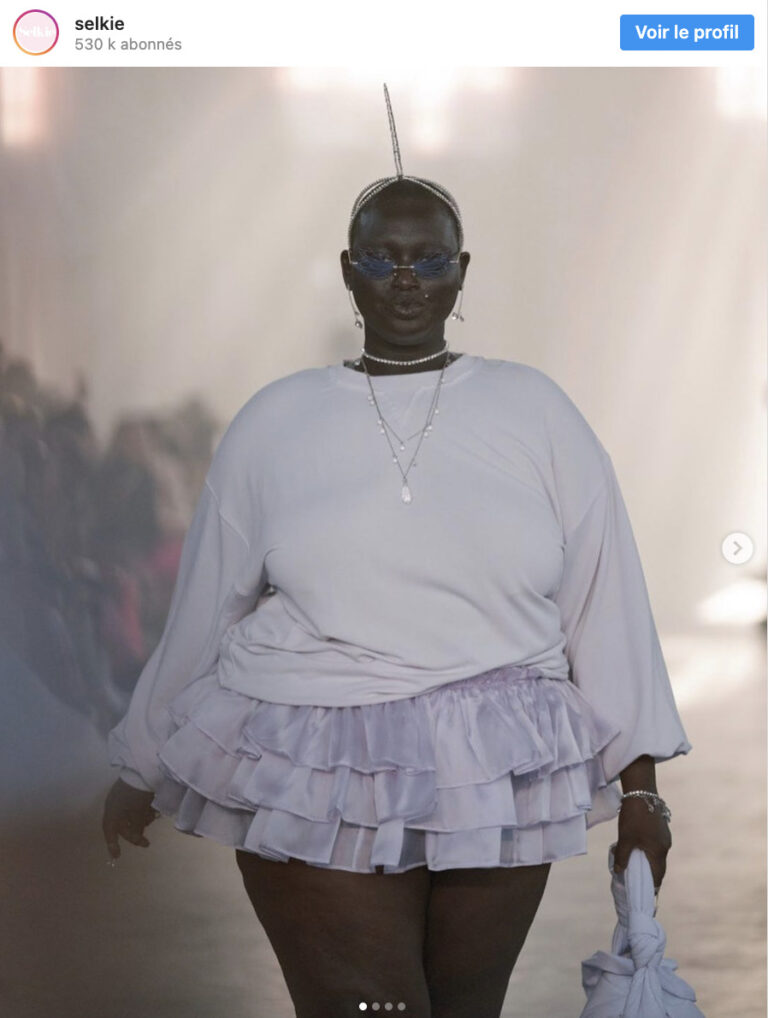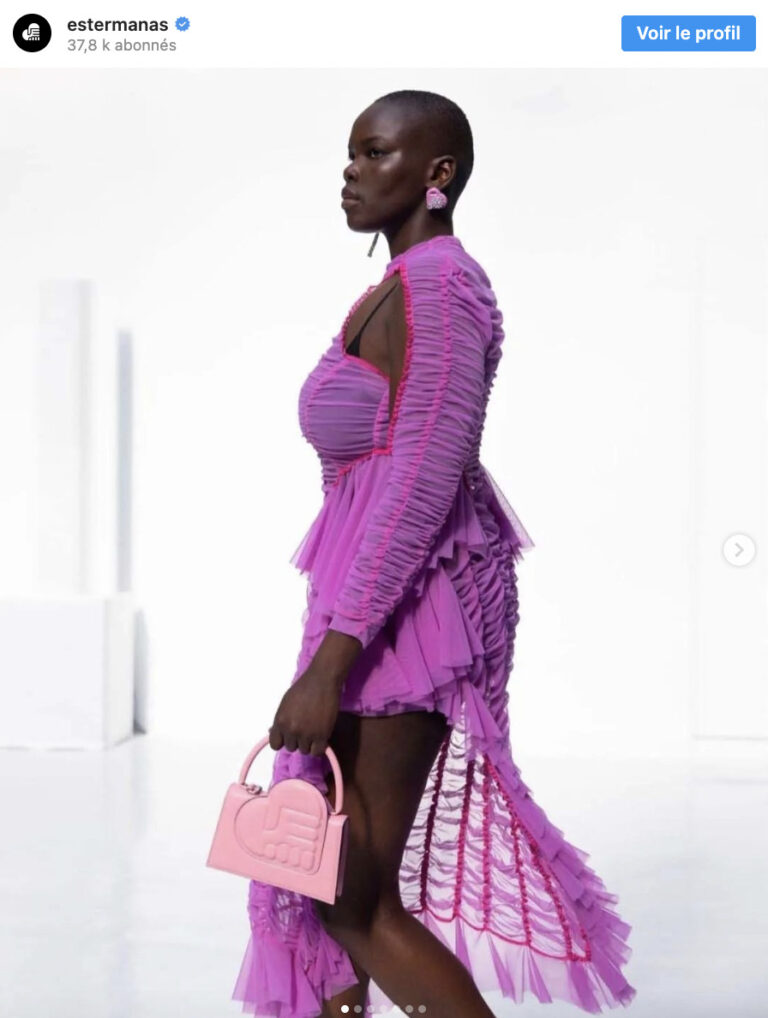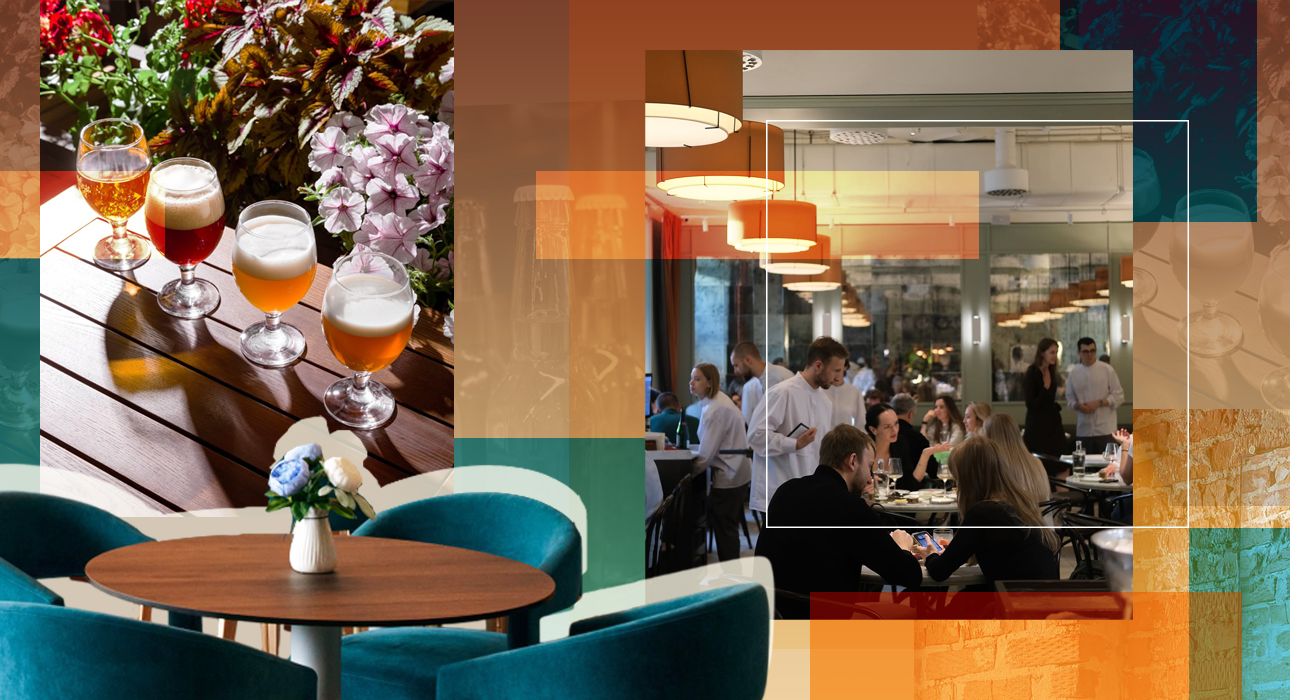The capitals of Western fashion (New York, London, Milan, then Paris) have just presented their proposals for spring-summer 2023. This fashion month now finished, it’s time to draw different conclusions. The media InStyle for example he just established a study on the diversity of the morphologies presented on the catwalk, and it is obviously as enlightening as it is worrying.
Out of 327 brands that parade, only 30 go beyond size 48
Indeed, of the 327 brands featured on official calendars, only 30 (9%) exceed a size 20 US (or 48 in France). Unsurprisingly, the vast majority of these labels offering large formats (22 of the 30 mentioned) are located in the United States, where the average size is between 16 and 18 (between 44 and 46 French). In fact, 70% of the brands that show up would go up to 42 according to the report of the study byInStyle.

Contrary to what one might think, it is not Paris that is at the top of the most exclusive brands in terms of size, but London this season. Only 1% of the designers in the English capital went beyond size 20 (= 48) and 27% did not exceed size 14 (= 42). Then comes Paris, then Milan, and finally New York which therefore offers larger sizes.
Yet, if we study these statistics more closely, we soon realize the poverty of the large offer, which of course is about joggers and sweatshirts much more often than sophisticated pieces.
A cursed inventory of the market in all its grossophobia
Note that, from a methodological point of view, InStyle he was not satisfied with observing what was happening on the catwalks (because not everything will necessarily be produced, and the entire range of sizes is not necessarily represented), but with what the buyers ordered (i.e. what will be sold a few months later at retailers).
Something to avoid falling into the trap of ostentatious virtue (using one or two mannequins large size as a guarantee body positive of the show when we only offer a very few plus size dresses that are actually on sale), but to be presented a relevant inventory of the market, in all its grossophobia.

Note that the champion of size diversity is the Selkie brand, which comes from the USA and goes up to 36 USA (= 64 French). In France, the champions would be Givenchy and Valentino, who go up to 52. Particular case: Ester Manas, who offers one-size-fits-all garments, suitable for all builds.
However, note that in addition to the simple gradation lengthening system (i.e. automatically extrapolating the measurements from one size to another, adding some percentages of fabric in strategic points such as waist circumference, sleeve length, etc.), sometimes it is better to turn to specialized brands that have the skills to sponsor plus size garments. Without fatphobia.
Front page photo credit: Instagram screenshot.
More articles on
Grossophobia
-
Yes, the Jurassic World 3 prod asked Bryce Dallas Howard to lose weight
-
This new fashion brand offers affordable clothing, made in France, from 44 to 60!
-
An illustrator cancels an activist’s prosthesis for a “body-positive” campaign.
-
Extra large short film against fatphobia with Barbara Butch, just released on YouTube
-
“I was afraid nobody knew I was pregnant”: why showing pregnant fat people is necessary
Source: Madmoizelle
Ashley Root is an author and celebrity journalist who writes for The Fashion Vibes. With a keen eye for all things celebrity, Ashley is always up-to-date on the latest gossip and trends in the world of entertainment.




